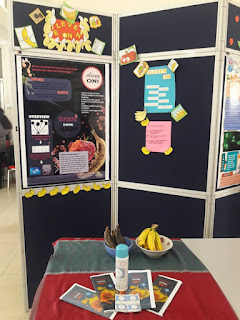E-Portfolio: Microbiology - Week 12
Hi peeps!
This week, Dr Wan taught us more about Viruses, Viriods and Prions. Basically, a virus is an infectious particle that reproduces by commandeering a host cell and using its machinery to make more viruses. A virus is made up of a DNA or RNA genome inside a protein
shell called a capsid. Some viruses have an internal or external membrane
envelope. Viroid is a piece of RNA without a protein coat responsible for
several plant disease. Prions is consist of single type of protein with no
nucleic acid component.
We also were given a group task to find information on a single virus of our choice. My group chose the Rabies virus. Rabies virus is a rod- or bullet-shaped, single-stranded, negative-sense, unsegmented, enveloped RNA virus. The virus genome encodes five proteins. Placement within the family is based on the distinctive morphology of the virus particle. Cross- reactive nucleoprotein antigens or comparative genomic sequences determine inclusion in the genus Lyssavirus, which includes rabies virus and at least five other pathogenic rabies-like viruses.
Next, for this week lab session. We had done the experiment on Serial Dilution using agar plate technique. Serial dilution a set of dilutions in a mathematical
sequence. In microbiological technique, serial dilutions are used to obtain a
culture plate that yields a countable number of separate colonies. From this, a
calculation of viable cells in the original suspension can be made, as a colony
picked for pure culture. Here is some pictures from the experiment:
 |
| Here is a picture of Fatin counting the colonies using Quebec colony counter. |
 |
| E. coli colonies on the agar plate from dilution |


Ulasan
Catat Ulasan